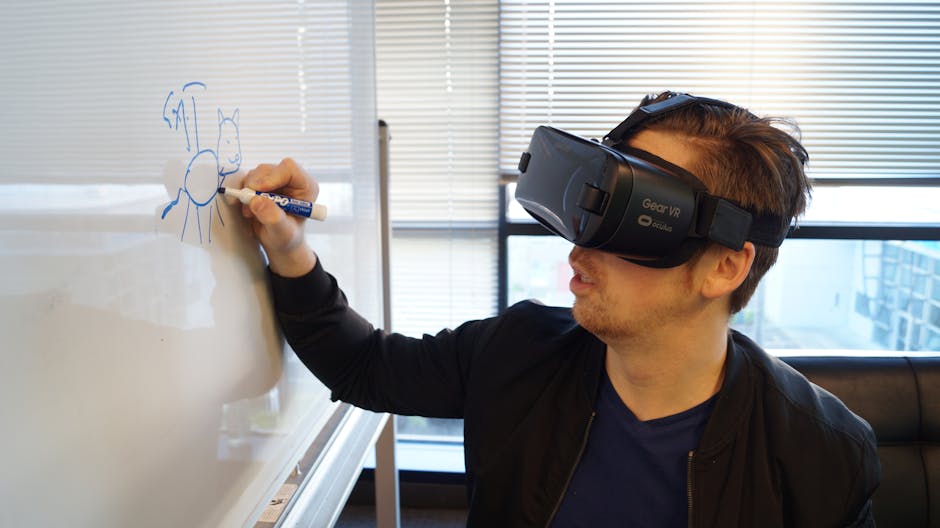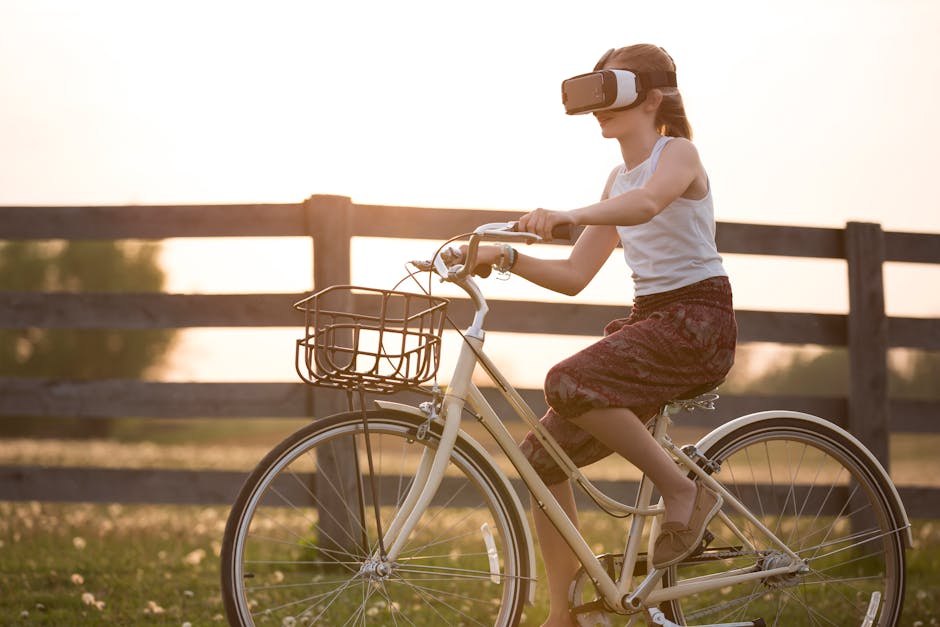Transform Collaborative Online Learning Through Virtual Reality Dynamics
In today’s fast-paced digital age, the concept of education is rapidly evolving, and in 2025, we are beginning to see the tangible benefits of integrating technology into our learning environments. Among these innovations is the Meta-verse, where virtual reality (VR) social dynamics promise to redefine collaborative online learning experiences. Just imagine stepping into a shared virtual classroom, where the limitations of physical space vanish, and where your peers are no longer mere usernames but fully realized avatars engaging in rich discussions and shared projects. This world isn't just a dream; it's an exciting reality on the horizon.
The Importance of Collaborative Online Learning

Collaborative learning has always been essential in education, enhancing problem-solving skills, critical thinking, and the ability to work as part of a team. These skills are crucial in today’s workforce, where jobs increasingly depend on collaboration and communication. However, traditional online education often lacks the necessary engagement and interactivity. Students sometimes struggle to connect personally with their peers or instructors, leading to feelings of isolation (a phenomenon discussed in detail in our article on absenteeism in online learning).
Enter the Meta-verse: a space that offers immersive experiences that can foster rich interactions and social dynamics between learners. By incorporating elements of virtual reality, we can create an environment that encourages collaboration like never before.
Understanding the Meta-verse

Before delving deeper into the social dynamics of VR in education, it's important to understand what the Meta-verse is. The Meta-verse is often described as a collective virtual shared space, created by the convergence of virtually enhanced physical reality and physically persistent virtual reality. This immersive environment allows users to interact and explore both social and educational experiences seamlessly.
The Role of Virtual Reality in Education

Virtual reality stands out in educational contexts by providing experiential learning opportunities that traditional methods can't. Instead of passively absorbing information, students can engage with content—be it historical sites, scientific laboratories, or literary settings—through an immersive, interactive experience. For example, students can walk through ancient Rome, witness chemical reactions in real-time, or participate in complex simulations. Such experiences create rich touchpoints for collaboration and discussion among learners.
Social Dynamics in Virtual Reality

The incorporation of virtual reality into online learning isn't just about the technology; it's about understanding the social dynamics it fosters. Here are some key aspects of how virtual reality changes the collaborative landscape of online education:
Enhanced Engagement

Virtual reality environments are designed to captivate. When students are "present" in an interactive world, their engagement levels rise. According to research published by the Harvard Business Review, engaging learning environments enhance retention rates and improve outcomes. Social cues—like body language and tone—are more pronounced in a virtual space, allowing learners to communicate effectively and build relationships, thus breaking down the barriers often faced in traditional online classrooms.
Building Empathy and Cultural Awareness

Unpacking complex social dynamics is easier in a virtual space. Students can embody different characters or roles and engage in scenarios that require empathy and cultural awareness. For instance, educational VR experiences that simulate various cultures can help students understand diverse perspectives and enhance their emotional intelligence, a critical skill for global citizenship. The burgeoning field of empathy training through VR illustrates this potential well.
Diverse Learning Styles Accommodated

One of the unique strengths of VR is its ability to accommodate different learning styles. Visual learners, spatial learners, and kinesthetic learners can all benefit from the tactical nature of VR. This is evident in how virtual environments can offer gamified learning experiences and immersive storytelling. For instance, students can engage with content through role-play or simulated interactions—tailoring their learning experience in ways that cater to their preferences.
Practical Applications of VR in Online Learning

Adopting virtual reality isn’t a mere conceptual shift; it has concrete applications in today’s education landscape. Here are some ways VR can be implemented effectively:
Virtual Field Trips

Virtual reality can simulate field trips to remote locations that might otherwise be inaccessible due to geographical or financial barriers. Students can explore the depths of the ocean or take a stroll through the Louvre, all from the comfort of their homes. This not only broadens their learning experiences but also encourages collaboration as they engage in group reflections or presentations following their virtual excursions.
Collaborative Projects in Real-Time

In VR, students can work on collaborative projects in real-time, combining their efforts as if they were in the same physical space. Utilizing VR platforms designed for creative collaboration can enhance group dynamics and instill a sense of community, as students share ideas and build projects collectively. Such tools also promote accountability; students can see real-time contributions from peers, fostering a shared commitment to group goals.
Personal Development and Social Skills

Social dynamics play a crucial role in personal development. VR can cultivate essential soft skills such as negotiation, conflict resolution, and team management. Students can practice navigating difficult conversations or teamwork scenarios in a safe environment before encountering these situations in the real world. This practical experience prepares them better for future collaborations and interpersonal relationships.
Challenges and Considerations

While the integration of VR in education is promising, it’s essential to consider some challenges and ethical dilemmas that come with it. Implementing VR solutions can require significant investment, and not all institutions may have access to the necessary technology. Additionally, ensuring accessibility for all students is paramount. Educators must strive to create inclusive VR experiences that cater to diverse needs.
Moreover, as seen in discussions surrounding ethical dilemmas in digital education, the effects of prolonged VR usage on mental health and social anxieties is still under review. Balancing technology with human interaction and ensuring these tools enhance rather than detract from the educational experience is critical.
The Future of Online Learning in the Meta-verse

As we look toward 2025 and beyond, the potential of the Meta-verse in reshaping education continues to expand. With advancements in technology, students will find themselves in even more stimulating learning environments that teeter between the boundaries of reality and virtual experimentation. Beyond immersive experiences, future innovations may integrate elements of artificial intelligence and data analytics to further personalize learning and foster collaboration.
Imagine students navigating a curriculum designed around their interests and cognitive strengths, all while interacting with global peers through VR. Such transformative approaches are not just ambitious dreams but practical goals on the horizon.
Final Thoughts

The promise of VR in collaborative online learning is one of the most exciting frontiers in education today. By embracing these technologies, educators and institutions unlock new avenues for engagement, empathy, and social dynamics that can redefine the learning experience. To embark on this journey, it is crucial to prioritize accessibility, ethical considerations, and personal engagement strategies. In doing so, we won’t just evolve our curriculum; we’ll cultivate a generation of learners empowered through innovative experiences. Explore opportunities to integrate VR into your learning ecosystem at your institution today—after all, the future of education is already here!



